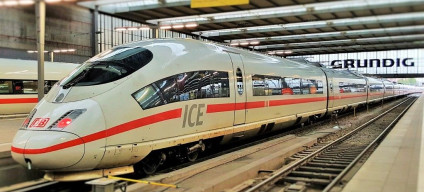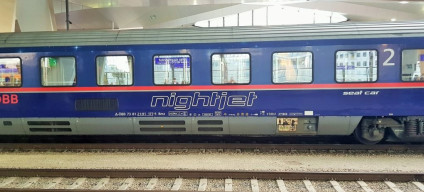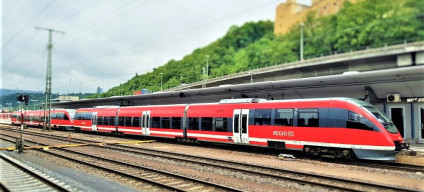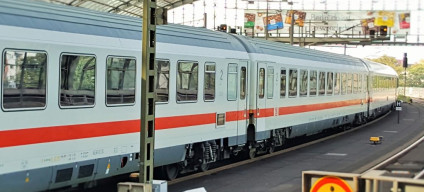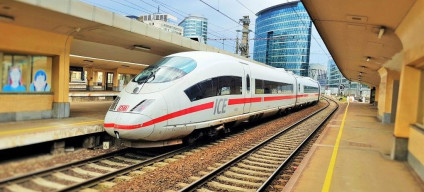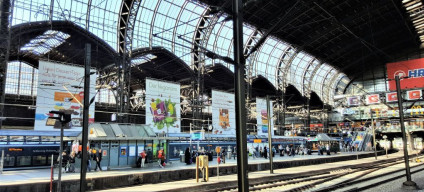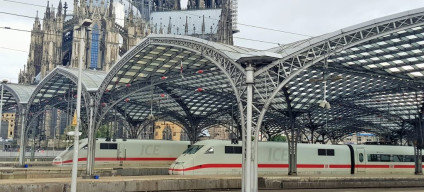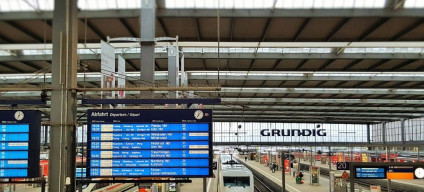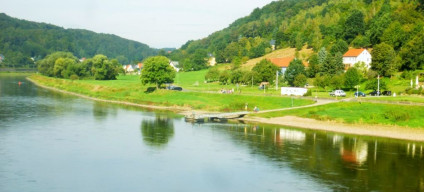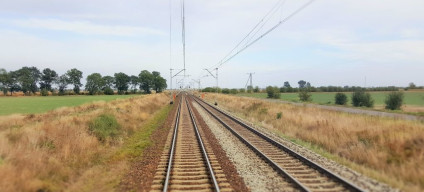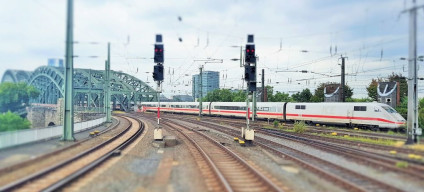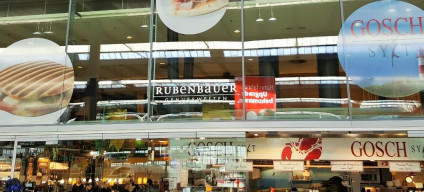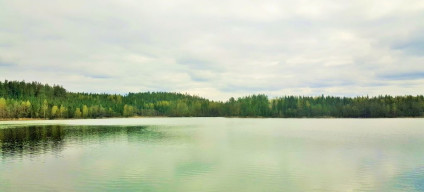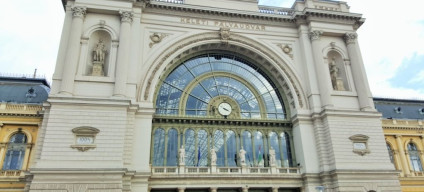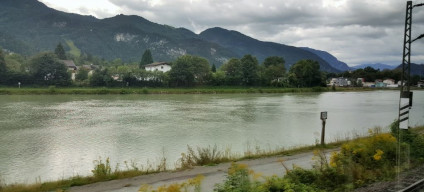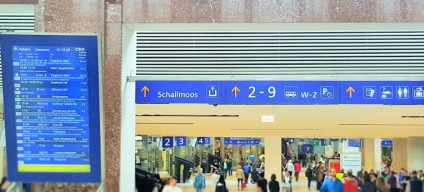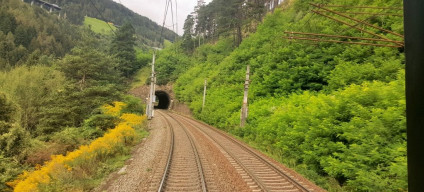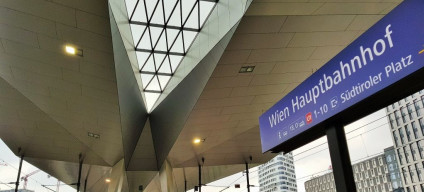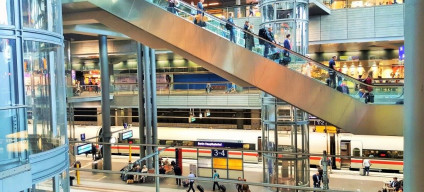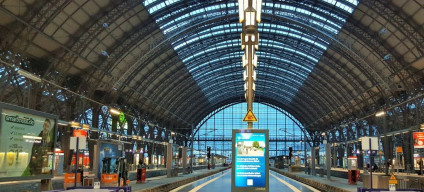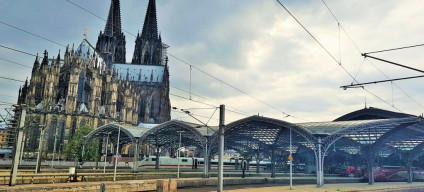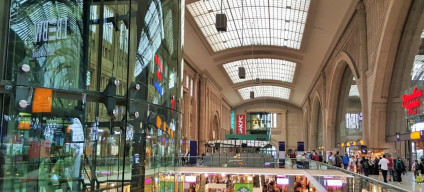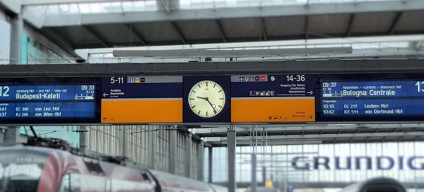Related Content
Content

Germany by train
Welcome to the guide on how to save money, time and confusion when travelling in Germany by train.
Share
Travelling by train in Germany can be an incredible experience.
It can boast some of the fastest and most fabulous trains in Europe, has impressive and efficient stations and offers a multitude of spectacular journeys.
Helpful links:
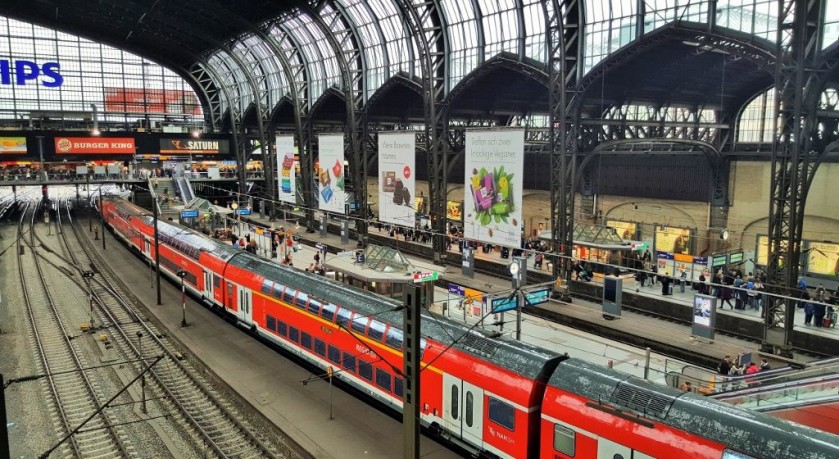
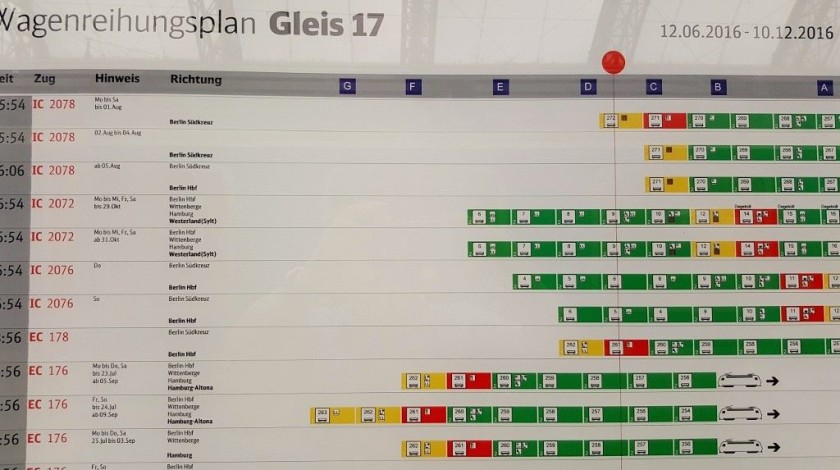
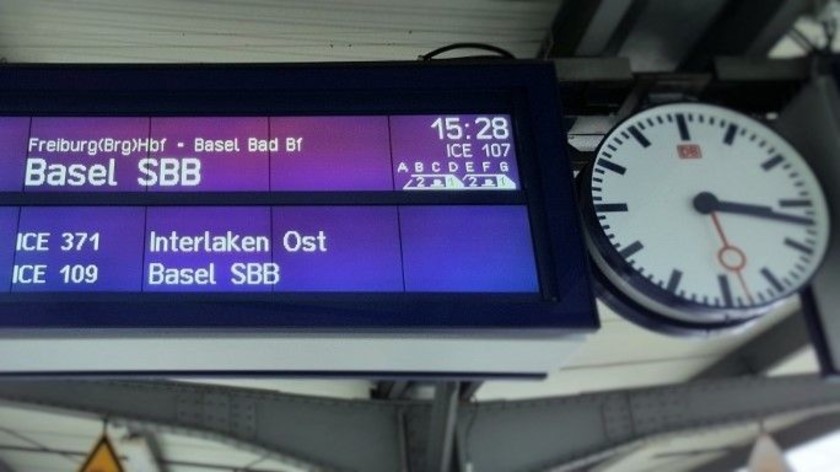
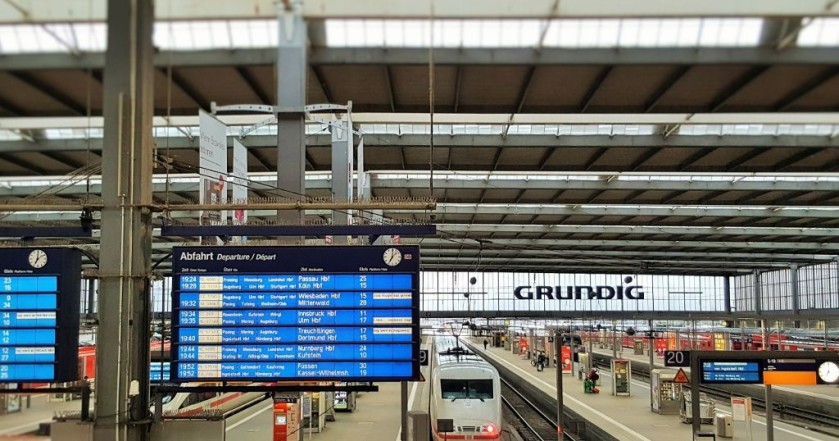
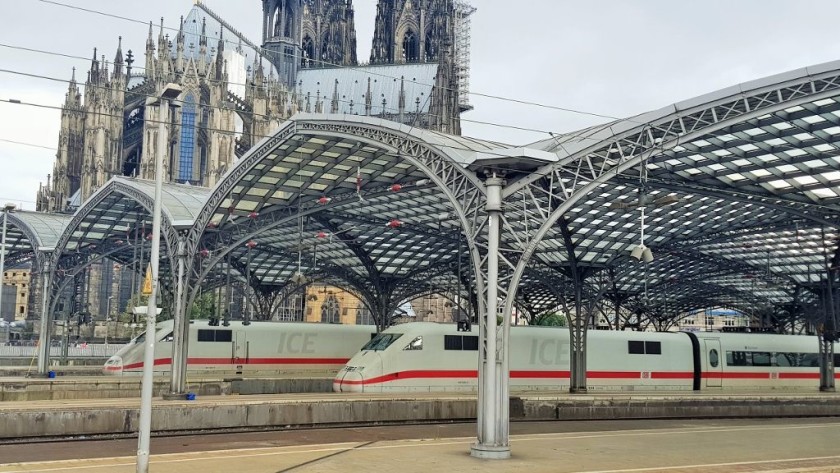
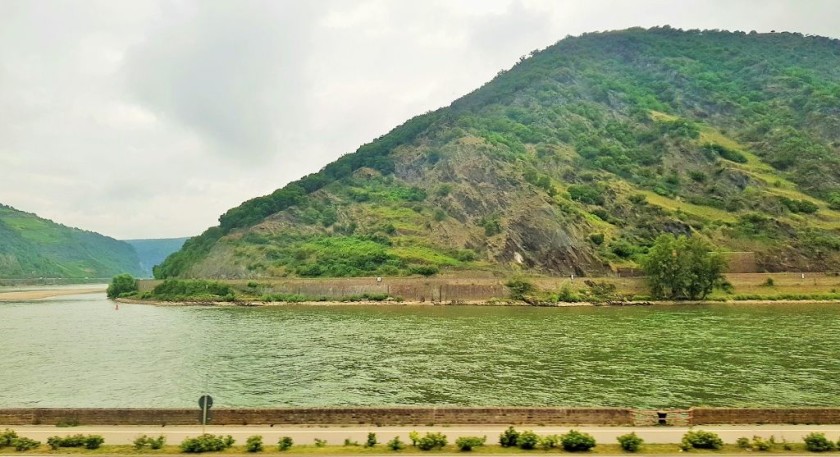
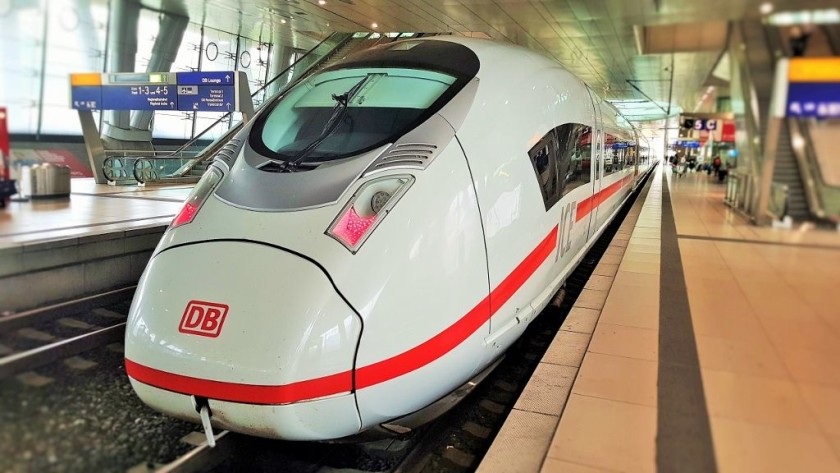
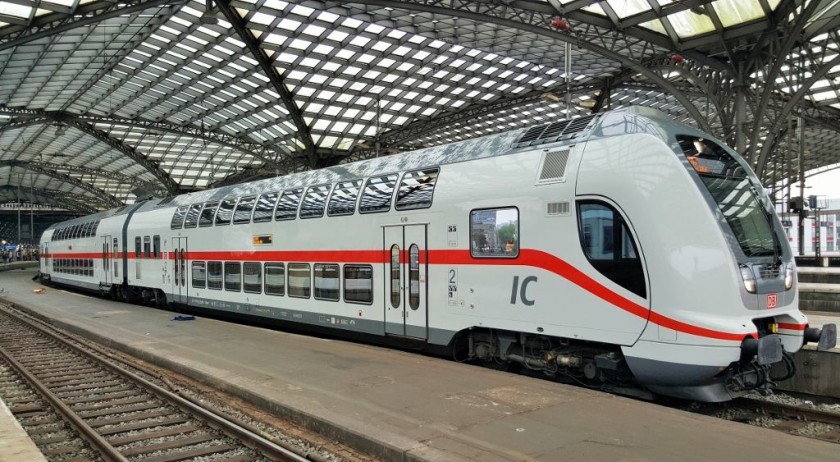
14 Things Most Worth Knowing...
These are the fourteen things that are particularly useful to know about German rail travel:
- The German national rail operator is DB (Deutsche Bahn) and it manages all of the national express train services - the ICE trains and the IC trains.
- The ICE trains also operate on international routes to and from Amsterdam, Brussels, Chur, Interlaken, Paris, Vienna and Zurich.
- DB does not operate sleeper trains, but ICE trains run overnight on many routes.
- Many of the regional, Regio train services which link cities and towns on shorter distance routes are operated by other companies, but this doesn't affect how tickets can be purchased and used.
- Tickets for journeys by the ICE and ICE trains are typically placed on sale from 6 months ahead of the travel date.
- The discounted tickets are branded Sparschiene tickets - and an adult booking this type of ticket for 1st or 2nd class, can take up to four children aged 15 and under with them at no extra cost.
- Seat reservations are available, but optional, on the ICE and IC trains and have a fixed cost regardless of distance - they are only complimentary and included when booking the more expensive types of ticket.
- Tickets for journeys for the Regio trains aren't typically discounted, and also aren't usually available online.
- When booking the cheapest last minute tickets at the station, they will not be valid on the IC and ICE trains.
- The main central stations in each city are known as hauptbahnhofs, so on timetables these stations are named Hamburg Hbf and Stuttgart Hbf etc.
11 The signage at stations is bi-lingual, it is in English and German, as are the announcements on the express trains, but the station announcements will be in German only. - The consistent features of the hauptbahnhofs include the presentation of the info to help you find a train and where to wait for it, the left-luggage lockers, the step-free access and the presence of Reisezentrum travel desks - which sell tickets and reservations for trains across Europe.
- Local S-Bahn trains link the hauptbahnhofs to city centre locations in Berlin, Frankfurt (Main), Hamburg, Leipzig, Munchen and Stuttgart.
- The ICE trains travel up to 300 km/h on these high-speed routes:
- Berlin ↔ Wolfsburg
- Seigburg/Bonn ↔ Frankfurt Flughafen
- Mannheim ↔ Stuttgart
- Hannover ↔ Wurzburg
- Halle and Leipzig ↔ Nuremberg
- Ingolstadt ↔ Munich
- Baden-Baden ↔ Offenburg
- Plochingen ↔ Ulm (the first stage of what will be a Stuttgart ↔ Ulm line)
Travelling on the trains:
German train services are placed into these four categories: ICE, IC, Regio and S-Bahn.
DB (Deutsche Bahn) is the German national rail operator, but it doesn't manage all of the train services in the country.
Regional (Regio) services in particular can be operated by other companies, but train tickets for these services are interchangeable.
Meaning that if you book a ticket at a station valid for a Regio train, then it can be used on any 'Regio' train to your destination, no matter which company is providing the service.
the ICE (Inter City Express) services:
Five different types of ICE trains are now used on routes within and to/from Germany.
The ICE services are express trains that spend some of their end-to-end journeys travelling on a high speed line.
ICE trains travel on high speed lines for most of the journey between these cities:
- Berlin <> Hannover
- Hannover and Wolfsburg <> Frankfurt (Main) and Wurzburg
- Leipzig/Halle <> Erfurt
- Erfurt <> Nurnberg*
- Nurnberg <> Ingolstadt (on route to Munchen/Munich)
- Koln/Cologne <> Frankfurt Flughafen/Airport*
- Mannheim <> Stuttgart
- Stuttgart <> Ulm
- Mannheim <> Offenburg
*Trains regularly travel at more than 285 km/h on these lines, but up to 270 km/h is the more usual speed on the other lines.
Note that there are no high speed lines between these cities:
- Koln/Cologne <> Hamburg
- Koln/Cologne <> Hannover
- Hamburg <> Hannover
- Hamburg <> Berlin
but ICE trains still operate on these routes.
the IC services:
The IC services ae more conventional express trains, which are mainly used on long cross country routes that don't involve travelling on the high speed lines.
Though IC trains can use the high speed lines for comparatively short sections of their journeys.
When there are no high speed lines between cities, the IC services often share the route with ICE services.
Two different types of train used for the IC services; one of which is the new double deck Intercity2 trains.
the EC services within Germany:
International EuroCity (EC) services provided by other national rail operators are slotted into the regular German train timetables.
If you will be taking a train journey between Berlin and either Dresden or Hamburg, you could be travelling on a Czech or Hungarian train.
Or if you make a journey between north-west Germany and south-west Germany, you could find yourself boarding a Swiss train.
And these are just some examples of when this can occur.
the Regio services:
The Regio services comprises a broad range of trains because they provide these different functions:
1 Longer distance 'commuter' routes from/and to major cities including Berlin, Koln, Hamburg and Munchen.
Regio services often share these routes with IC and ICE trains and when they do so, they can be a cheaper, but slightly slower alternative, to taking those express trains.
(2) The local and branch line services outside the major cities.
(3) Journeys of up to three hours which link smaller towns to regional capitals.
On these routes some Regio services can be faster than others because they skip more stations - and those faster trains are usually designated as 'Regio Express' (RE) services.
So check the timetables (the yellow Abfarht sheets at stations) before boarding Regio trains - taking the next train to depart MAY not be the quickest option.
the S-Bahn services:
The S-Bahn services are the local trains in urban areas of Germany.
Similar to the RER trains in Paris and Elizabeth line trains in London, the S-Bahn trains in Berlin, Frankfurt(Main), Hamburg and Munich/Munchen travel across the city centre, providing faster alternatives to the equivalents of taking the metro from the main 'hauptbahnhof' stations.
Quiet zones:
'Quiet' and 'Phone' seating areas/zones are available on all ICE trains and on most IC services.
You can choose on a seating plan, whether you wish to travel in these zones when making a reservation,
Catering:
Some form of on board catering will be available on all ICE and IC services and on the EC trains within Germany, but not on Regio services:
In summary:
- Restaurant cars = some ICE trains and the EC trains,
- Bar/bistro counter = all ICE trains, all EC trains, some IC trains
- Trolley services of refreshments = some IC trains (those which don't have bar/bistro counters).
- On demand at seat service in 1st class = all ICE trains
Bicycles on German trains:
How you travel with a non-folding bike in Germany depends on the type of train service you will be traveling by.
Standard (non-folding) bicycles can be taken on all DB trains, except the ICE 1, ICE 2, and the older variant of the ICE 3 trains, but special tickets / reservations usually have to be purchased prior to boarding.
ShowMeTheJourney's guide to booking these bike tickets for German train journeys is available here
Detailed train guides
Click on the buttons below to access info such as on board facilities, and what to look out for when boarding and travelling with luggage/bikes.
Notes on the ticketing:
If you will be buying tickets at the last minute, looking up the train times on the DB website, before you set off for the station can be a good idea.
On most ICE routes the trains depart no more than hourly; and this also applies to some IC routes, and on most Regio routes too.
Though between some destinations the direct trains only depart every other hour; and some very long distance IC services only operate once per day.
The booking periods:
Tickets are typically made available up to 6 months ahead of the travel date, but this booking period can be shorter when looking up journeys which involve travelling after the second Sunday in each December.
The nationwide and international train timetables / schedules have a major annual update, which takes effect from the second Sunday in December.
However, tickets can't be placed on sale until the new timetable is confirmed and this confirmation tends to occur around mid-October, there isn't a set date for this.
So if you will be be looking up a journey for travel after the second Sunday in December and can't find any tickets on the route you want to take, it will be because the tickets haven't yet been made available.
Discounted prices:
The cheapest type of discounted tickets for journeys by the express ICE and IC services are the 'Super Sparpreis' tickets.
They can be booked from 6 months ahead of your travel date - the further ahead you can book, the cheaper the prices will be, because only limited numbers of discounted tickets will be available at the very cheapest prices.
On the majority of ICE and IC journeys within Germany the cheapest 'Super Sparpreis' ticket price is now €17.90, this is a newly lowered price.
Whether these prices will be available when you book depends on how quickly the tickets at the lowest prices sell out.
On the longer distance routes those €17.90 fares can be hard to find if you're not booking at least 3 months ahead.
They will sell out fastest on the most popular departures, so trains leaving at different times on the same day can have different ticket prices.
Therefore if you can be flexible re: your departure times then it’s usually worthwhile searching through ‘earlier/later’ departures to find the cheapest fares; or use the ‘Saver Fare’ facility on the DB website.
You might save more than €40 by taking trains that are departing earlier or later in the day.
Super Sparpreis and Sparpreis tickets are train specific, you must travel on the train you have selected; this also applies if you haven’t reserved.
Booking tickets at stations:
Tickets for journeys by S-Bahn trains and nearly all Regio trains aren't discounted, so they cost the same if you buy them last minute at the station; and because they're not discounted, they're not usually available online
However, when you book tickets at a station it will be train service specific.
Because the tickets for journeys by Regio trains are cheaper when booked at a station, they can't be used to travel on an IC or ICE train.
So once you have booked tickets for a journey by Regio train, you can't then just hop on any next train to your destination - you can only take a Regio train.
Seat reservations for journeys within Germany:
Reservations are now only automatically included when booking 1st class Flexpreise tickets, or when booking Flexpreise Plus tickets for 1st and 2nd class travel.
When purchasing the cheaper Super Sparpreis and Sparpreis tickets for journeys by express train, you can opt to either:
- travel 2nd class and add a seat reservation for an additional fee of €5.20.
- book 1st class / upgrade a 2nd class ticket to 1st class and add a seat reservation for an additional fee of €6.50.
When booking Flexpreise tickets for travel in 2nd class, you can add a seat reservation for an additional fee of €5.20.
Seat reservations are not available on Regio trains.
If you will be using a rail pass on trains within Germany, seat reservations are optional in both 1st AND 2nd class on IC and ICE trains; but the availability of seats isn't guaranteed if you haven't reserved .
Seat reservations on international trains:
Making reservations is OPTIONAL on some international train services/routes, including:
- ICE trains to/from Austria, Belgium, The Netherlands and Switzerland.
- EC trains to/from Denmark (outside summer months), Hungary, Switzerland and The Czech Republic.
- IC trains to/from The Netherlands and Switzerland
- Railjet trains to/from Austria and Hungary
Although reservations are automatically included when booking 1st class tickets.
However in contrast reservations ARE compulsory on:
- DB-SNCF trains to/from France
- EC trains to/from Croatia, Denmark (summer only), Italy, Poland and Slovenia,
- All overnight trains from/to Germany.
These compulsory international train reservations are automatically INCLUDED when booking 1st AND 2nd class tickets online or at stations
Though rail pass users have to book reservations before boarding these trains.
Journeys with connections:
Often making a change of train can save money in comparison to taking the direct ICE trains.
The connections are usually designed to make the changing of trains as simple as possible.
On many routes taken by ICE trains, the timetable is set up so that in one hour there will be a direct ICE train between cities.
Then in the alternate hours, a 5 – 10 min connection between ICE trains is required to complete a journey.
However IC and ICE trains AREN'T exceptionally punctual, so allowing a minimum of 30mins to make a connection between long distance trains can be the best option.
If your journey involves making a connection between two trains at a Hauptbahnhof and you miss the connection due to a late arrival of a train, tickets and reservations can be re-arranged for a subsequent train free of charge at a Reisezentrum travel desk.
Child Tickets:
These have recently changed for the better.
- For journeys by the express trains, the EC, IC and ICE trains, an adult (on German railways an adult is a person aged 15 and over) can now take up to four children aged 6 - 14 with them at no additional charge.
The change is that this policy only previously applied when parents or grandparents were accompanying the children.
Their ages will need to be entered when booking, so you can't just turn up at the station and hop on board; the kids will still require tickets, but in effect they will be complimentary.
These new terms also apply to 1st class tickets and it doesn't matter which type of ticket is chosen; and it also applies to international journeys by these specific trains (except for the ICE trains to/from Paris). - For journeys by the the Regio and S-Bahn trains the former child ticket policy applies, namely a parent or grandparent can take up to four children aged 6 - 14 with at no charge
- Children aged 5 and under travel for free on all trains.
- Children aged 6-14 travelling unaccompanied by adults, or when travelling in a party of more than 6 people will be charged 50% of the adult rate.
Regional 'Lander' tickets:
If you are planning a day trip by train within a particular region in Germany, these regional day tickets can be great value for money, they cost from €23 - 31 for an individual, but up to four other people can be added to the ticket for only €3 - 7 per person.
Meaning that, for example, five adults can explore anywhere in Bavaria in a day by train for only €52.
Though these 'Lander' tickets can be used to travel only on Regio and S-Bahn services and not on the express IC and ICE trains.
If you want to travel between regions, then the Quer-Duch-Lands-Ticket (see below) can be a good option.
The national 'Quer-Duch-Lands' Ticket:
Also known as the Day Ticket, this Quer-Duch-Lands-Ticket allows for travel anywhere in Germany for a day, as long as you travel only on Regio and S-Bahn services and not on the express IC and ICE trains.
Though using this ticket becomes a particularly good option if you will be travelling in a group.
That's because the base price for one Adult is €42, but up to four other adults can travel on the ticket for only an additional €7 per person.
This ticket can be used for making a long-ish day trip by train, OR a multi-destination single day itinerary, OR as a cheaper, but slower alternative to taking the ICE and IC trains when the cheapest express train tickets have sold out.
Detailed guides to using tickets and rail passes:
The new national monthly flat-rate ticket
Journeys from Berlin
The journey guides include access to booking links and information about the trains, tickets and destination stations. Plus for the scenic routes there are insights on how to make the most of the rides on the trains.
Journeys from Hamburg
The journey guides include access to booking links and information about the trains, tickets and destination stations. Plus for the scenic routes there are insights on how to make the most of the rides on the trains.
Journeys from München / Munich
The journey guides include access to booking links and information about the trains, tickets and destination stations. Plus for the scenic routes there are insights on how to make the most of the rides on the trains.
Search for a journey:
Scenic Journeys:
Seven beautiful journeys through river valleys and gorges:
- Bonn > Koblenz > Bingen - (Mainz)
- Koblenz <> Trier
- Dresden > Bad Schandau > over the Czech border to Decin
- Regensburg <> Passau
- Ulm <> Tuttingen
- Heidelberg <> Neckarelz
- Naumbrg > Jena > Saalfeld
Five lovely routes through forests:
- Offenburg > Singen > Konstanz
- Stuttgart <> Singen
- Freiburg <> Donaueschingen
- Seebrugg <> Titisee
- Platling <> Bayerisch Eisenstein
Six wonderful Alpine journeys:
- Rosenheim <> Berchtesgaden
- Kempten > Immenstadt > Lindau
- Ulm <> Goppingen
- Kempten > Reutte > Garmisch
- Murnau > Garmishch > Mittenwald > Seefeld
- Murnau <> Oberammergau
Short videos showcasing some of these journeys have been uploaded to the ShowMeTheJourney channel on YouTube.
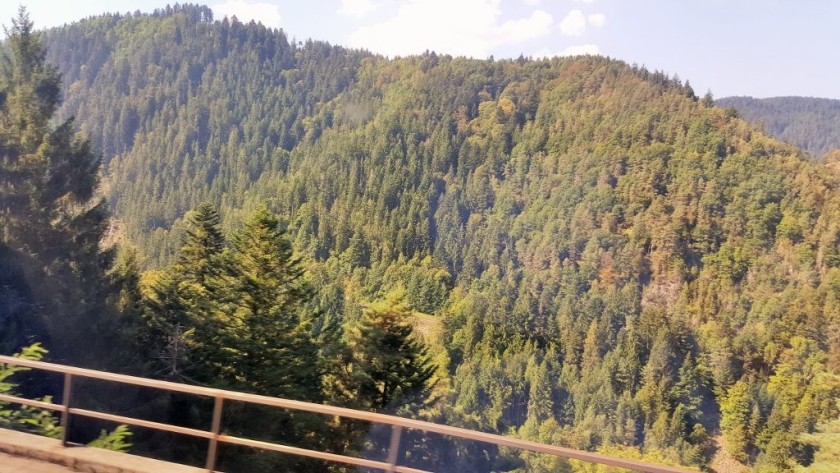
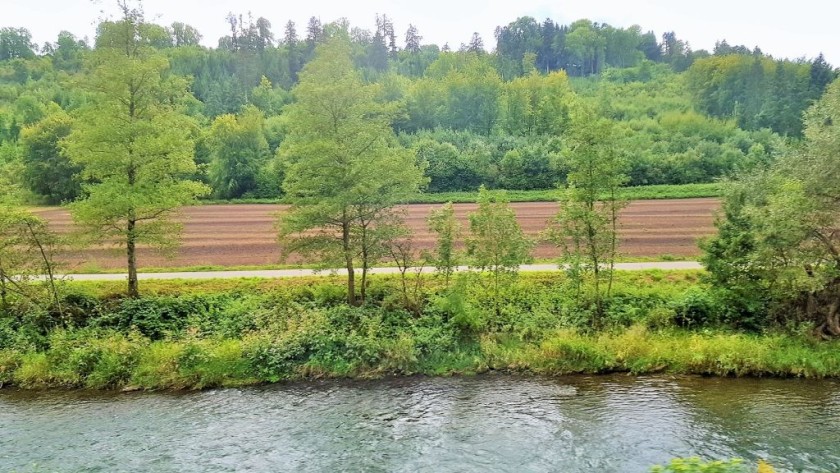
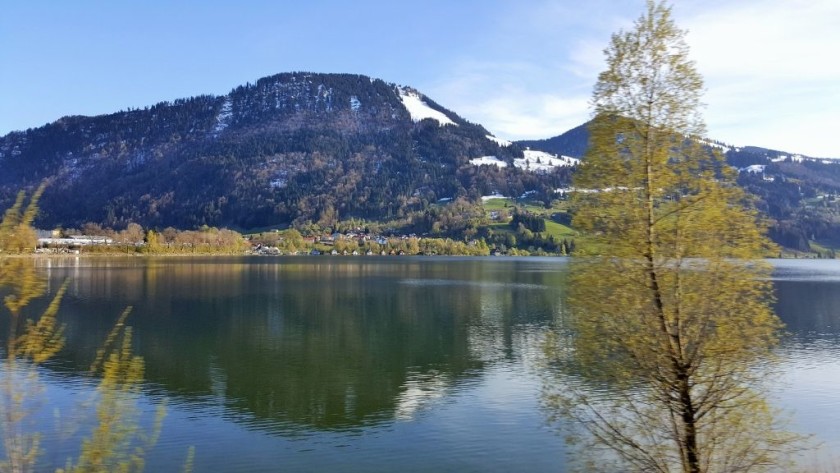
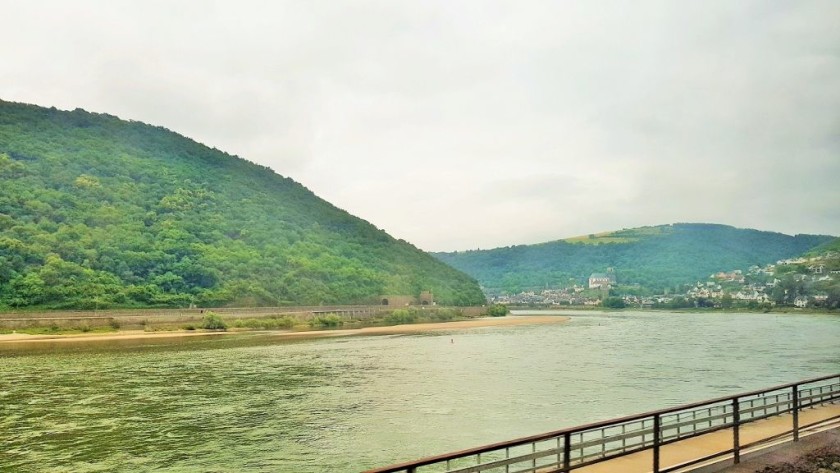
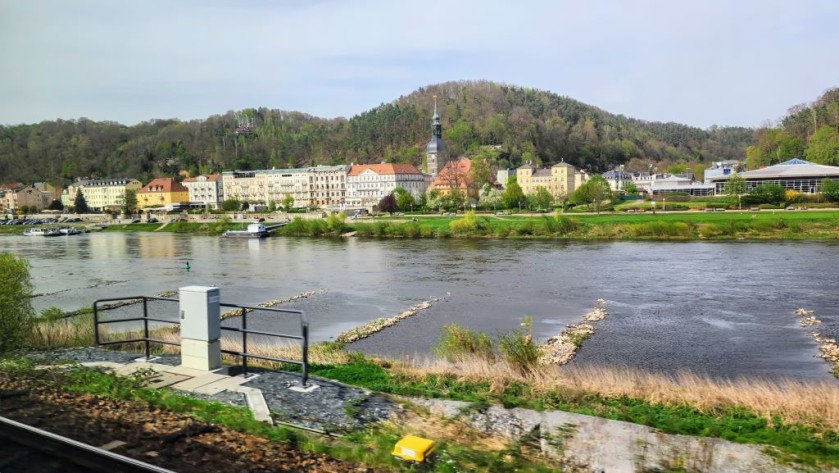
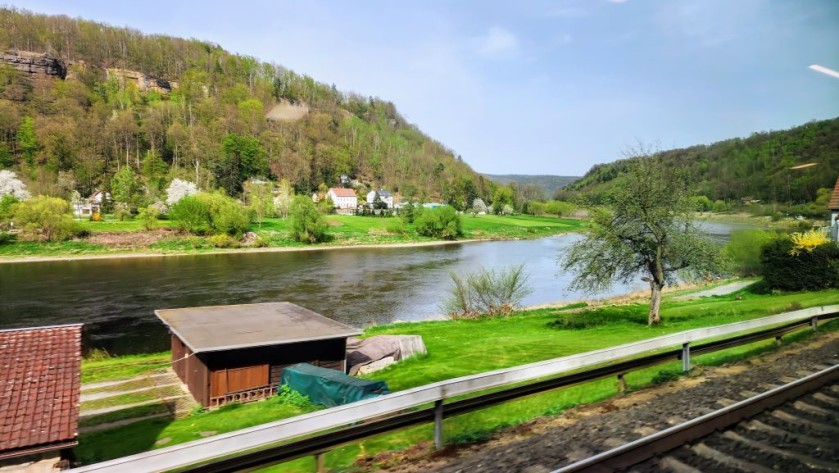
International rail routes from Germany:
Holiday Ideas:
Let the train take you to beautiful locations:
Notes on using the major stations:
Six things that are good to know:
1. The main central stations in Germany cities are named ‘Hauptbahnhofs’ and this is universal across the country.
The names of landmarks or notable people etc are not used for the names of hauptbahnhofs.
'Hauptbahnhof' is usually shortened to 'hbf' on timetables, departure screens and the DB website.
2. In some cities including Berlin, Hamburg and Munchen/Munich, long distance trains can call at other stations in the city, before they arrive at the hauptbahnhof/hbf.
So avoid seeing the name of the city on the signage at a station and assuming you've arrived in the city centre.
In German cities anything but 'hbf' in a station name indicates that the station is NOT the main, city centre station.
3. All hauptbahnhofs house Reisezentrum (travel desks) at which tickets and reservations on most European international trains can be arranged - without paying booking fees.
European train services that can be booked at a Reisezentrum desks include trains that DON'T travel to/from Germany.
Therefore Reisezentrums can be a great resource if you're following a Eurail or Interrail pass itinerary.
You can avoid the booking fees payable on the Eurail and Interrail online reservation services; AND the booking fees payable when arranging reservations at stations in Belgium, Switzerland and The Netherlands.
4. You won't go hungry at a hauptbahnhof.
The largest German stations usually house 'food courts' with multiple dining options, though 'fine dining' restaurants are less common.
Numerous take-away outlets will sell food that is of better quality than you will find on any train.
5. All hauptbahnhofs have coin operated left luggage lockers, which can be accessed during the stations opening hours
When depositing bags you must pay for an initial 24 hours - even if you will be only depositing a bag for a couple of hours.
Then on collection you pay the balance if you have left your bag for more than 24 hrs; the charge will rise per day, but keep in mind that you may have to pay in excess of 20 euros in coins, you can't use cards or notes.
Change machines for converting notes into coins can be available, though in our experience they tend to be unreliable.
What we do is to collect coins during a trip and put them wherever we have stashed the key, which will open the locker.
6. The German word for platform/track is 'gleis'.
At non terminal stations the gleis will be divided into zones.
There will be information on the gleis showing in which zones each coach on the trains using that gleis will be located.
So if you have a reserved seat, or want to travel in a specific part of the train, then you can wait in the corresponding zone.
You can usually only find out the specific zone info when you are on the platform/track/gleis.
Detailed info on the major stations
Click the buttons below to discover how to travel to and from the stations by public transport, plus links to additional info including the station and city websites.
Please support ShowMeTheJourney
This second version of ShowMeTheJourney is exciting and new, so we are genuinely thrilled that you are here and reading this, but we also need your help.
We’re striving not to let anything get in the way of providing the most useful service possible, hence a facility has been set up with DonorBox which can be used to support the running costs and make improvements.
Instead of advertising or paywalls, your financial support will make a positive difference to delivering an enhanced service, as there’s a lot of ideas which we want to make happen.
So if you have found the info provided here to be useful, please go here to say thank you.
Pan-European train travel guides:
This second version of ShowMeTheJourney is exciting and new, so we are genuinely thrilled that you are here and reading this, but we also need your help.
We’re striving not to let anything get in the way of providing the most useful service possible, hence a facility has been set up with DonorBox which can be used to support the running costs and make improvements.
Instead of advertising or paywalls, your financial support will make a positive difference to delivering an enhanced service, as there’s a lot of ideas which we want to make happen.
So if you have found the info provided here to be useful, please consider saying thank you.
See if there’s a unique journey guide for your trip, featuring info on the trains, tickets & stations.

This is one of more than 100 train travel guides available on ShowMeTheJourney, which will make it easier to take the train journeys you want or need to make. As always, all images were captured on trips taken by ShowMeTheJourney.

